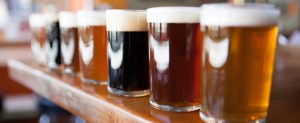
Craft beer will continue to dominate in 2017 with locally produced brews leading the charge, according to market research company Euromonitor International.
The key predictions for 2017 are:
Traditional beer consumption in Australia is declining
Traditional beer consumption per capita in Australia has been on a long-term, downward trajectory for many years. Much of this decline is attributable to decreases in the consumption of traditional beer brands. Euromonitor International data shows that between 2011 and 2016, per capita beer consumption in Australia declined more than 9.5 per cent from approximately 84 litres per person to 76 litres per person. This is a trend that is anticipated to continue. However, in spite of these dire predictions, craft beer consumption in Australia is burgeoning and the local production of craft beer continues to grow.
Perceptions about beer are changing
One major reason for this change is that Australian consumers now perceive beer in a different way. While mainstream lagers retain a large share of the market volume-wise, consumers are looking for more choice and variety. It is for this reason that flavoured beer products have been gaining traction. Euromonitor International data indicates that in the flavoured/mixed lager category, off-premise retail sales increased by 23 per cent in 2015. Manufacturers have actively supported this growth through new product developments such as the release of Lion’s XXXX Summer Bright Lager with Mango in September 2016.
Beer consumers become more discerning
The palettes of Australians are also changing with premiumisation being a key trend driving the growth of craft beer. With many Australians traveling abroad and craft beer production in Australia gaining momentum since the late 1990s, local consumers have developed high expectations about how a craft beer should taste and manufacturers have been keen to reflect this consumer sentiment. One industry source indicated that craft beer manufacturers are investing more heavily in quality assurance and quality control to minimise batch variations and maintain consistency in taste, as experienced with mainstream beer brands. As a result, beer is now seen as a more serious drink that can be paired with food and drunk as part of a celebration, rather than a drink that is consumed without thought.
Young Australians in particular have become more discerning about their choice of beer products. In particular, consumers have become more knowledgeable about the origin and production of the alcohol they are drinking. As Australians come to consider themselves beer connoisseurs, they continue to trade up and purchase better quality drinks while often drinking fewer of them. This trend is reflected in strong unit price growth across beer products, with Euromonitor International data showing an 18 per cent increase in off-premise unit prices of beer between 2011 and 2016.
From paddock to pint
Australian consumers are also showing a preference for locally-produced craft beer. In fact, the Brewers Association of Australia and New Zealand indicates that 93 per cent of beer consumed in Australia is locally-produced. Consumers have moved from traditional beer brands such as Carlton Draught and Victoria Bitter to craft beer brands such as Stone & Wood and James Squire. In particular, consumers are looking to support the use of quality local ingredients, such as local honey and hops, with some media sources referring to this trend as ‘paddock to pint’. This support for local breweries mirrors the growing trend in the Australian food industry to support locally grown produce, epitomised in the Country of Origin Labelling introduced by the Australian Government on 1 July, 2016.
Overseas-based beer manufacturers are also looking to cater for the Australian domestic beer market by setting up local operations. For example, in mid-January 2017, Yeastie Boys, an independent New Zealand brewery, is setting up a brewing base in Sydney to distribute their locally-made beers nationally. Experienceit Beverages is one of the distributors of Yeastie Boys as well as other premium craft beers. The company’s Managing Director Johnny Latta stated in trade press “our aim with this new venture is to deliver a fantastic selection of Yeastie Boys beers from around the Yeastie globe (UK and NZ), while at the same time creating something uniquely Australian”. This new operation will give local consumers greater exposure to India Pale Ale (IPA) craft beers as taxes charged on imported IPA’s impose a price barrier for Australian consumers.
Aluminium cans are all the rage
Microbreweries have helped shape the local beer landscape in other ways. For example, the use of aluminium packaging by local microbreweries as a way of differentiating their products has bolstered the use of this packaging material in the Australian beer market. Aluminium cans are preferred by manufacturers as they are more economical to ship, are more portable for consumers and they result in fresher beer as the liquid is protected from light. One industry source suggests that aluminium packaging has been a ‘game changer’ and a key innovation in the beer market.
Consumers have also become more accepting of the use of aluminium cans, due in part to their greater knowledge about the production of craft beer products. Advances in packaging technology have also helped boost the acceptance and appeal of aluminium cans. For example, the use of polymer lining to ensure beer does not contact the aluminium and impact taste and the development of the ‘360’ lid, in which a beer lid can be completely removed to turn the can into a cup, have led to improvements in the drinking experience for consumers.
The Craft Beer Industry Association (CBIA) approximates that more than 70 million litres of craft beer is produced each year in Australia and with craft beer being consumed by all demographics, production is expected to continue its strong growth. Similarly, Euromonitor International anticipates that consumption will remain strong, with total volume of ale (off- and on-premise) growing by a compound annual growth rate of 5.8 per cent between 2015 and 2020.
This article was written by Sara Agostino, Research Analyst at Euromonitor International for the 2017 National Liquor News Annual Industry Leaders’ Forum.
